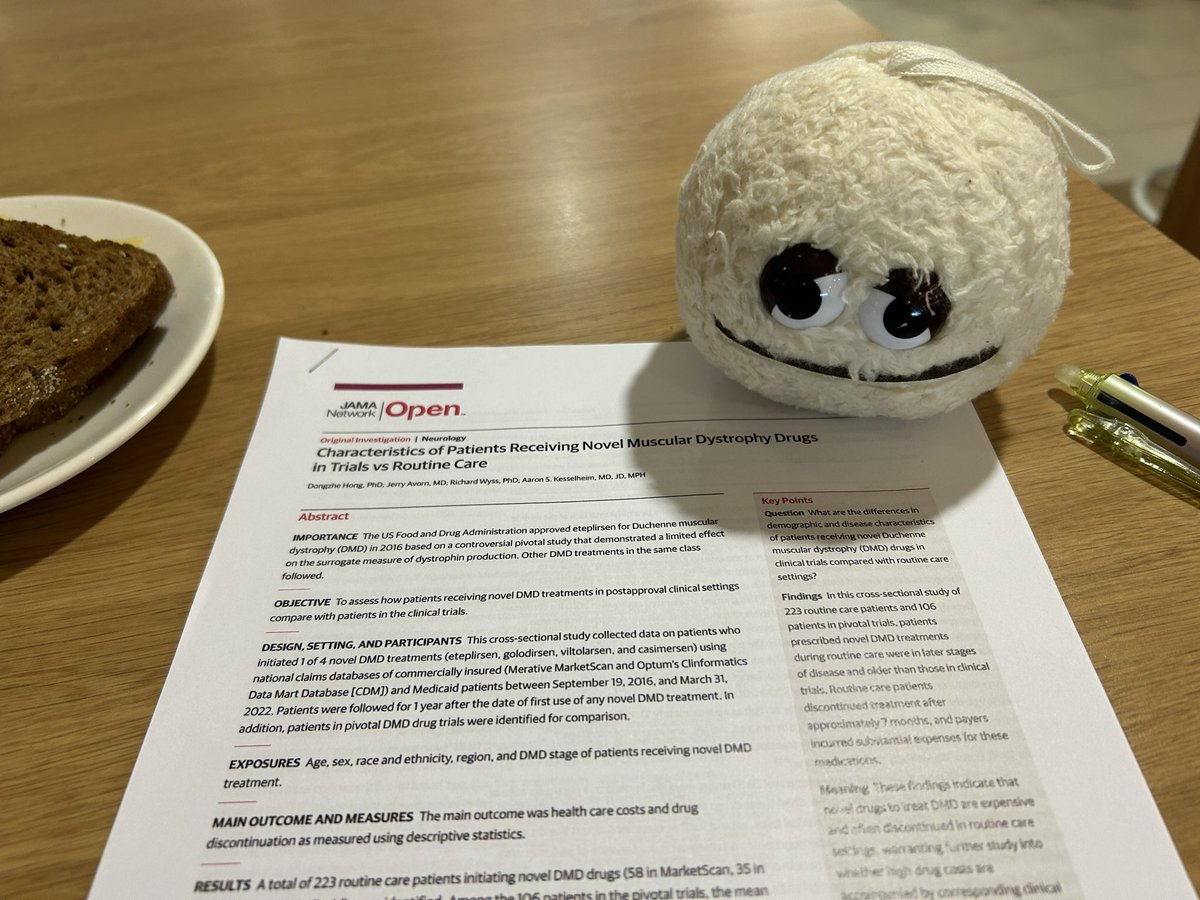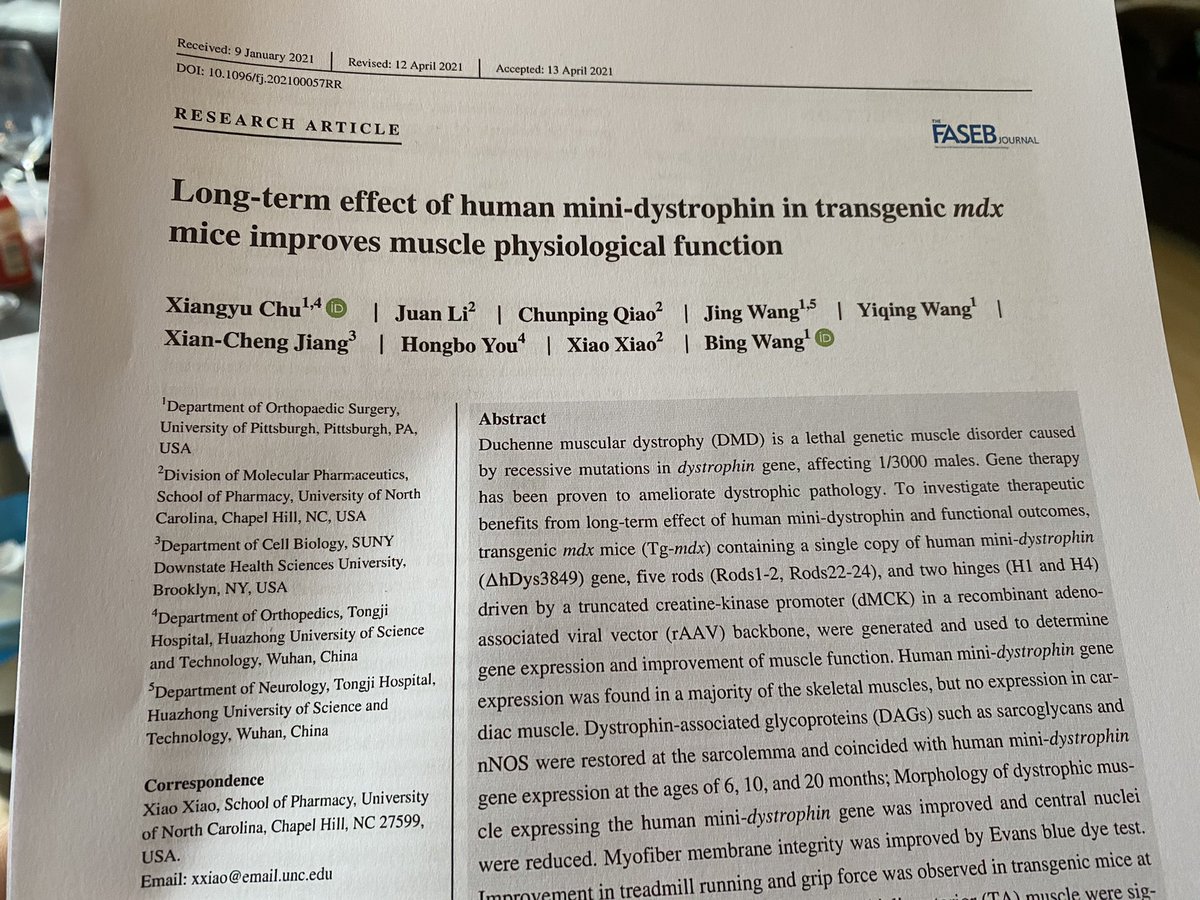
Translating science from bench to bedside and from jargon to lay language
How to get URL link on X (Twitter) App


 The FDA approved eteplirsen in 2016 based on its ability to skip exon 51 to restore the production of partially functional dystrophin. The approach is mutation specific and other exon skipping drugs followed: golodirsen, viltolarsen and casimersen.
The FDA approved eteplirsen in 2016 based on its ability to skip exon 51 to restore the production of partially functional dystrophin. The approach is mutation specific and other exon skipping drugs followed: golodirsen, viltolarsen and casimersen.

 The authors describe that all approved Duchenne therapies currently are suboptimal. Agreed. They offer cell transplantation as a potential solution. However, currently delivery of stem cells is a problem and also the immune response to donor stem cells.
The authors describe that all approved Duchenne therapies currently are suboptimal. Agreed. They offer cell transplantation as a potential solution. However, currently delivery of stem cells is a problem and also the immune response to donor stem cells.

 The paper describes the use of alternatives for phosphorothioate (PS) as ASO backbones for splice switching ASOs. This backbone increases stability and cell uptake but leads to safety issues. Model ASO used here is nusinersen (spinraza, approved for spinal muscular atrophy).
The paper describes the use of alternatives for phosphorothioate (PS) as ASO backbones for splice switching ASOs. This backbone increases stability and cell uptake but leads to safety issues. Model ASO used here is nusinersen (spinraza, approved for spinal muscular atrophy).

 Duchenne is caused by lack of dystrophin. Gene addition therapy aims to restore dystrophin production in muscle and heart by providing a copy of the gene code using adeno-associated viral vectors (AAV). However, AAV capacity is too small for complete dystrophin.
Duchenne is caused by lack of dystrophin. Gene addition therapy aims to restore dystrophin production in muscle and heart by providing a copy of the gene code using adeno-associated viral vectors (AAV). However, AAV capacity is too small for complete dystrophin.